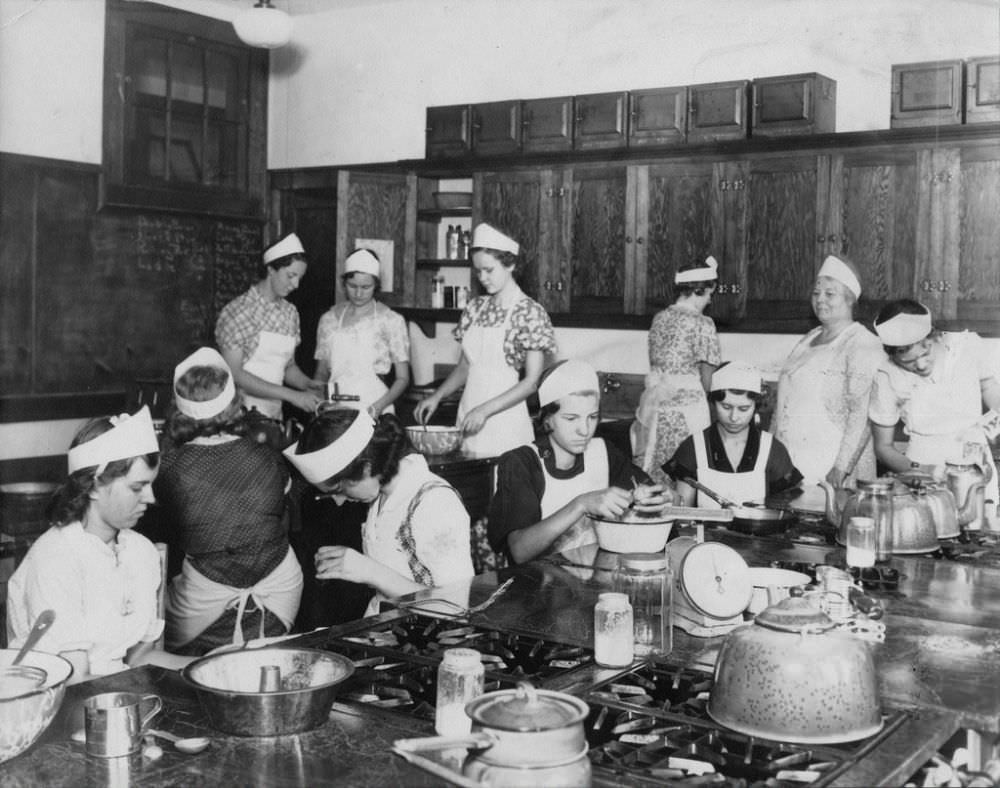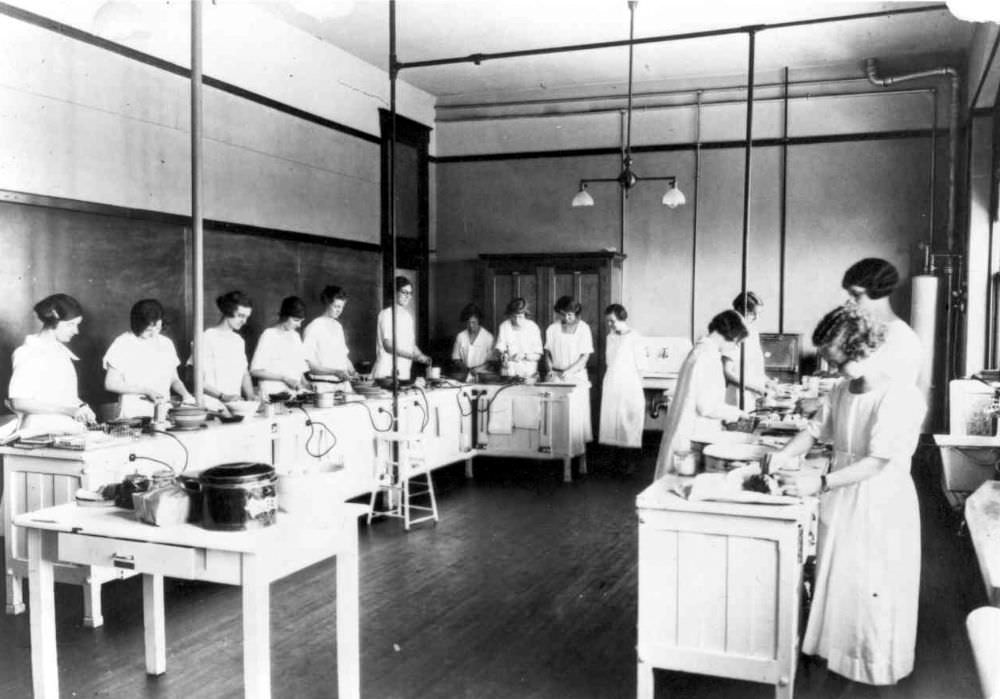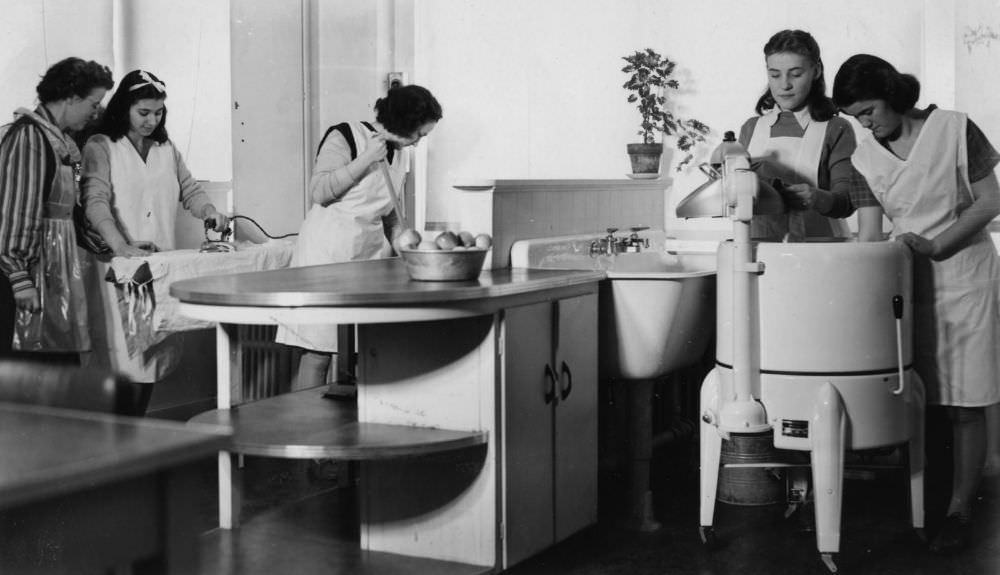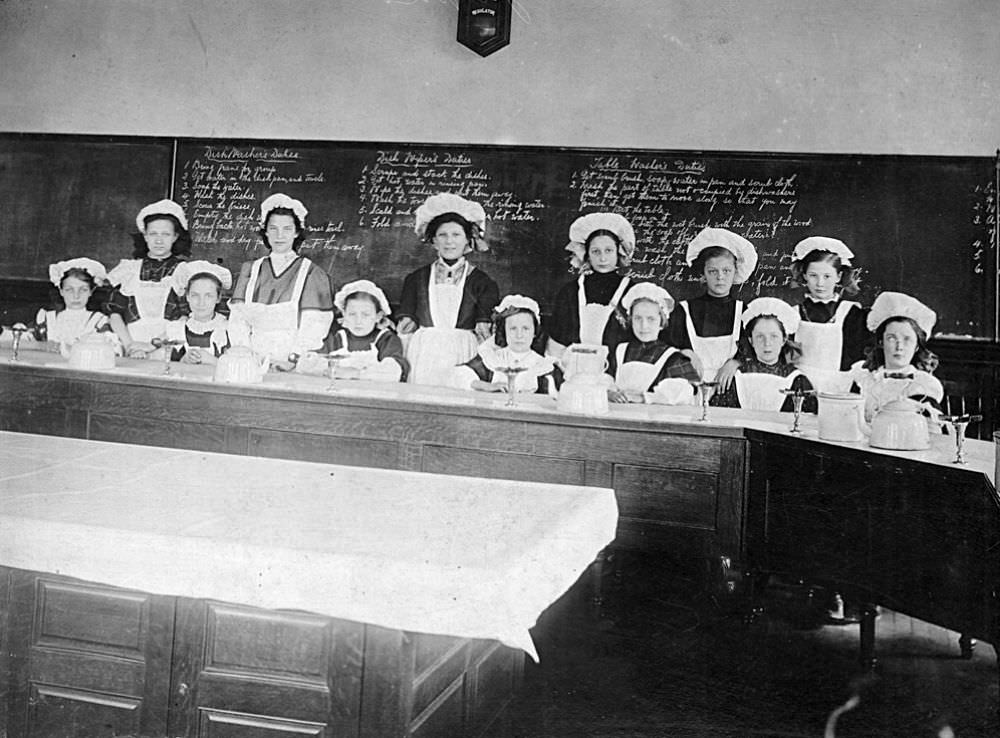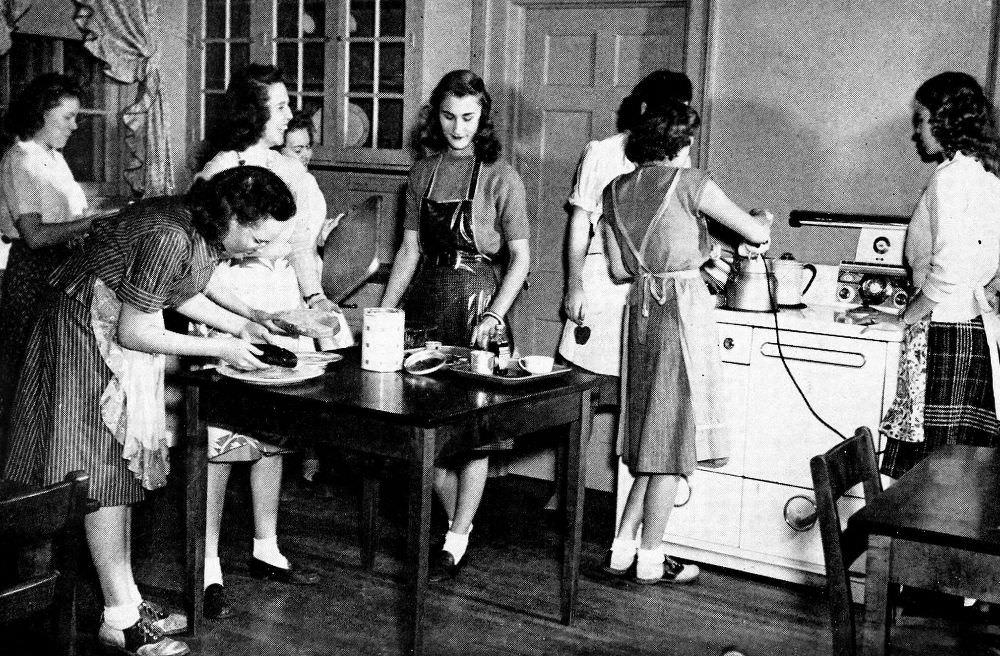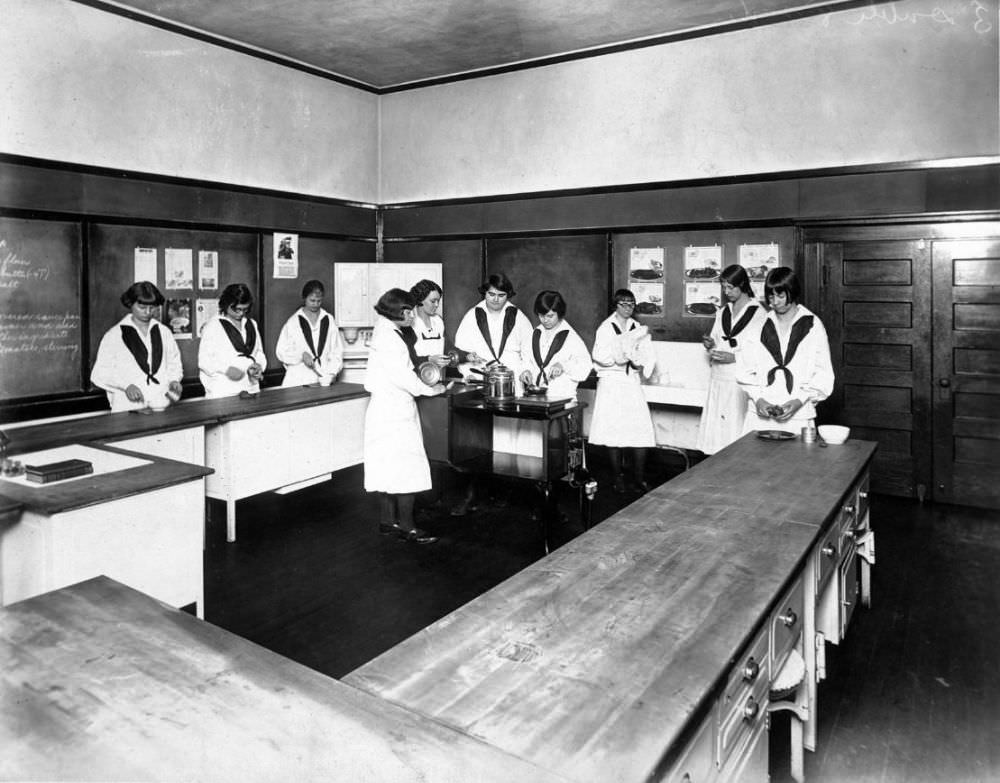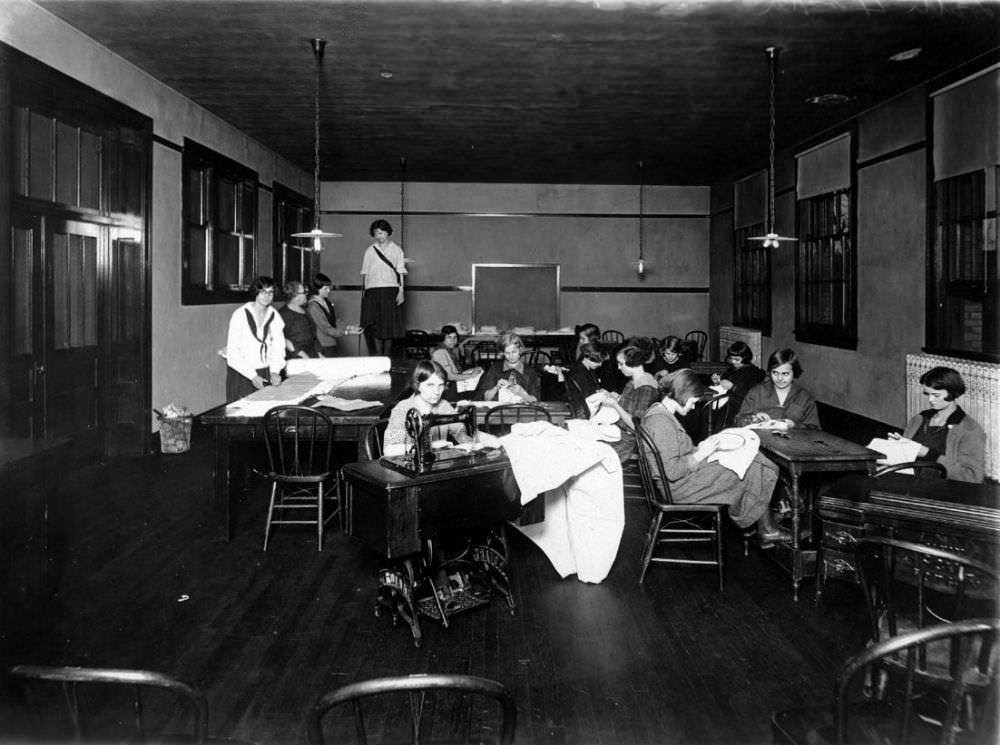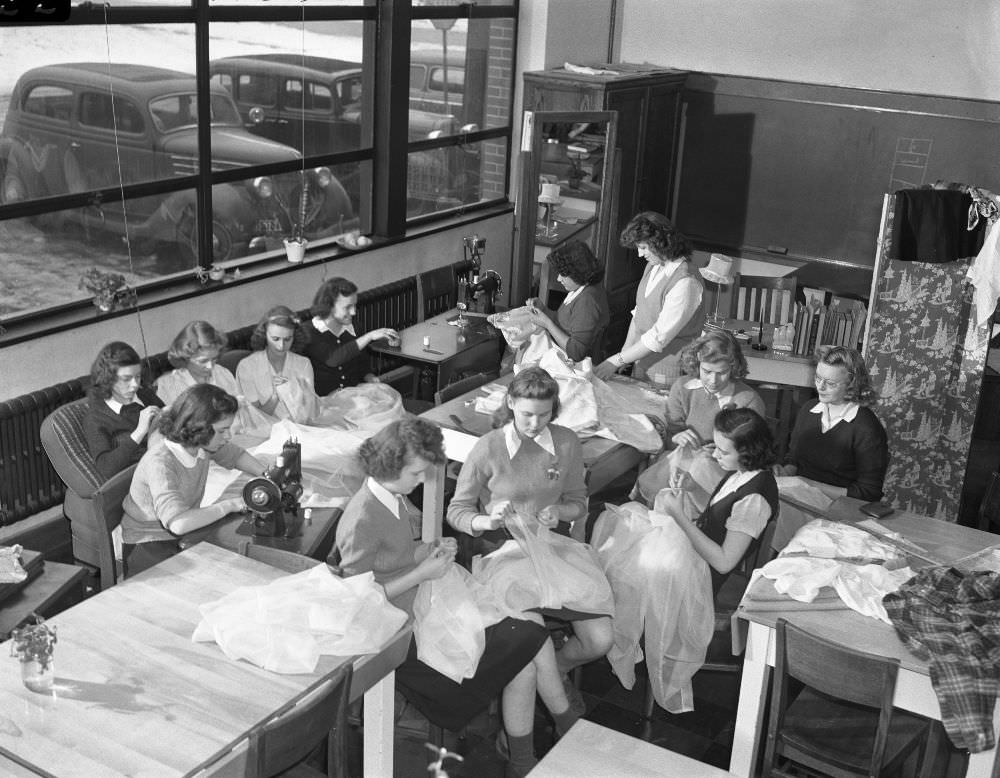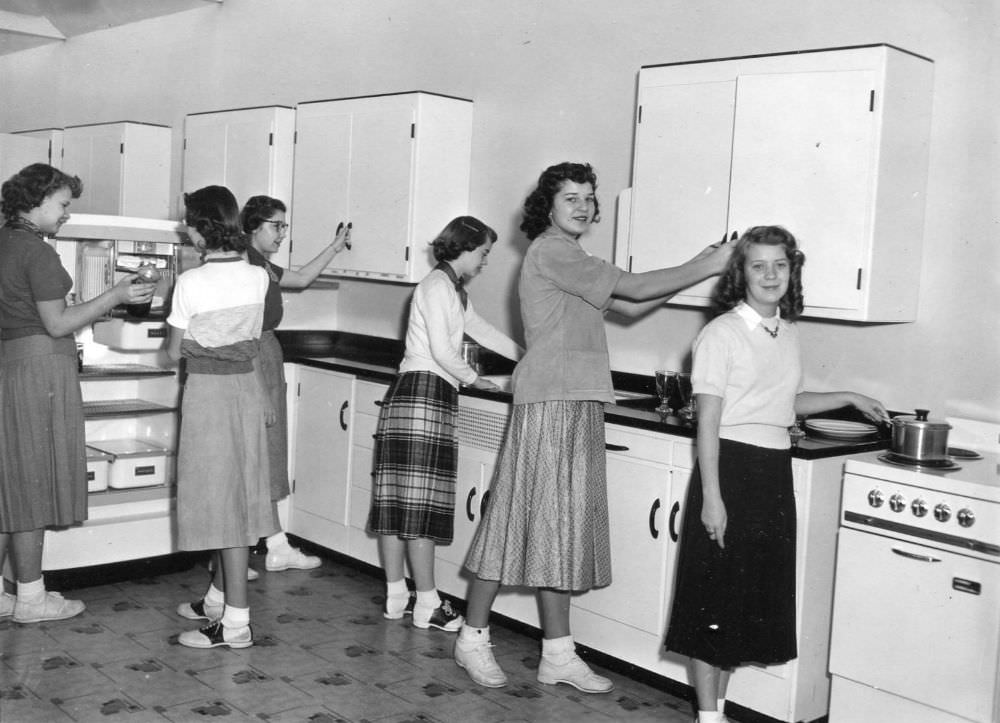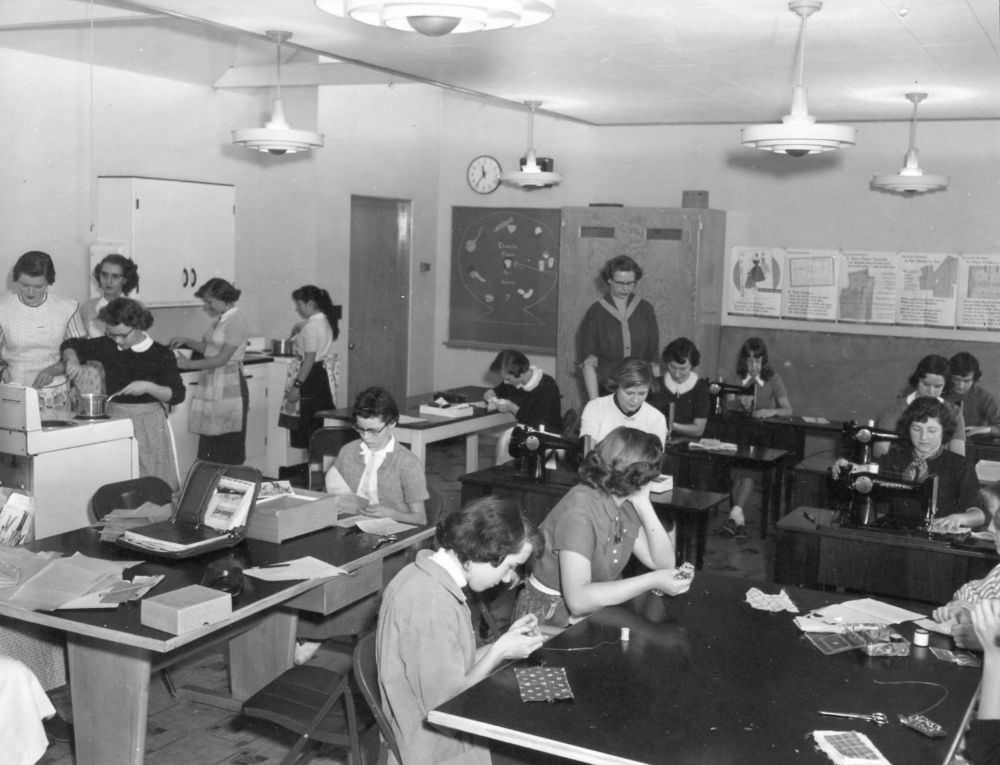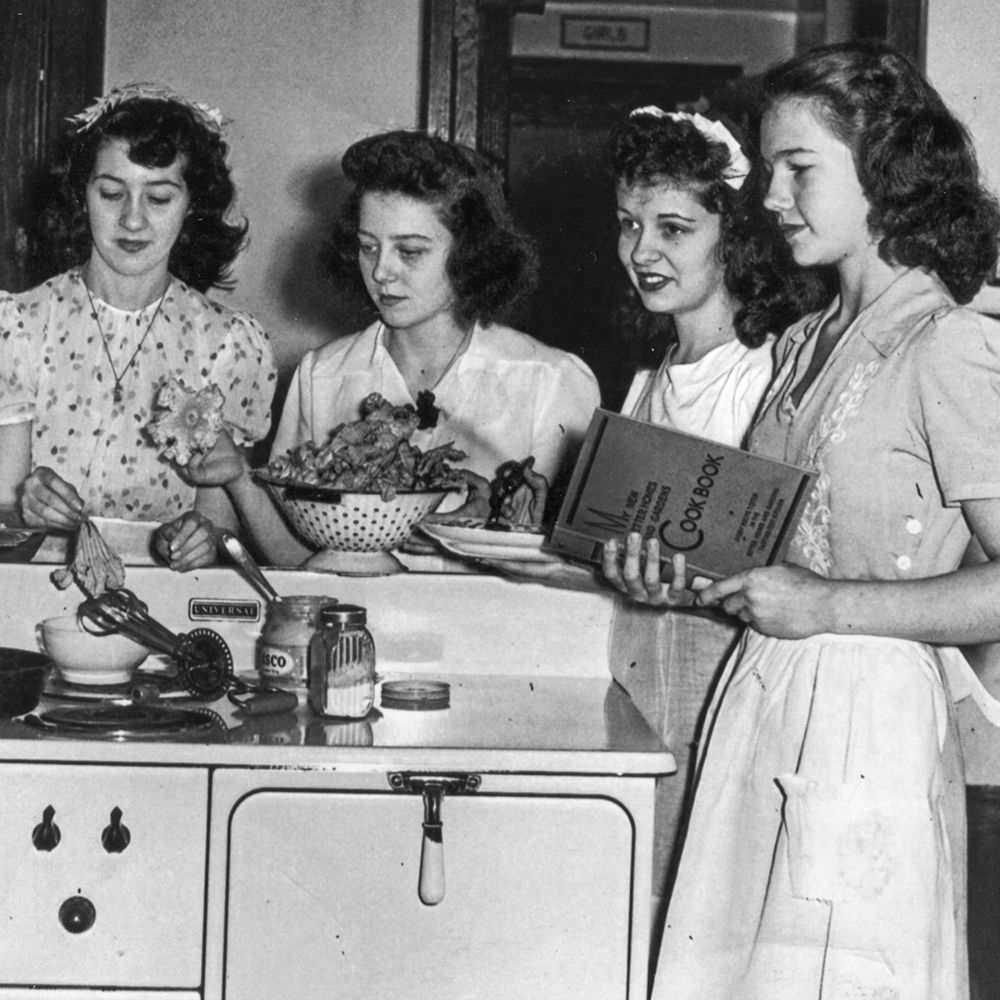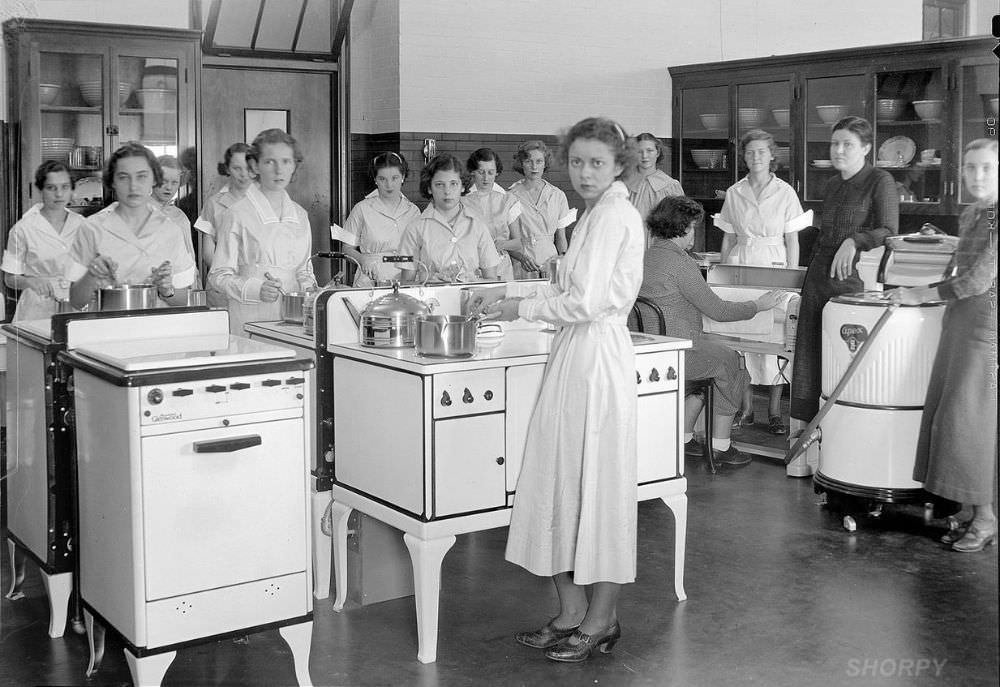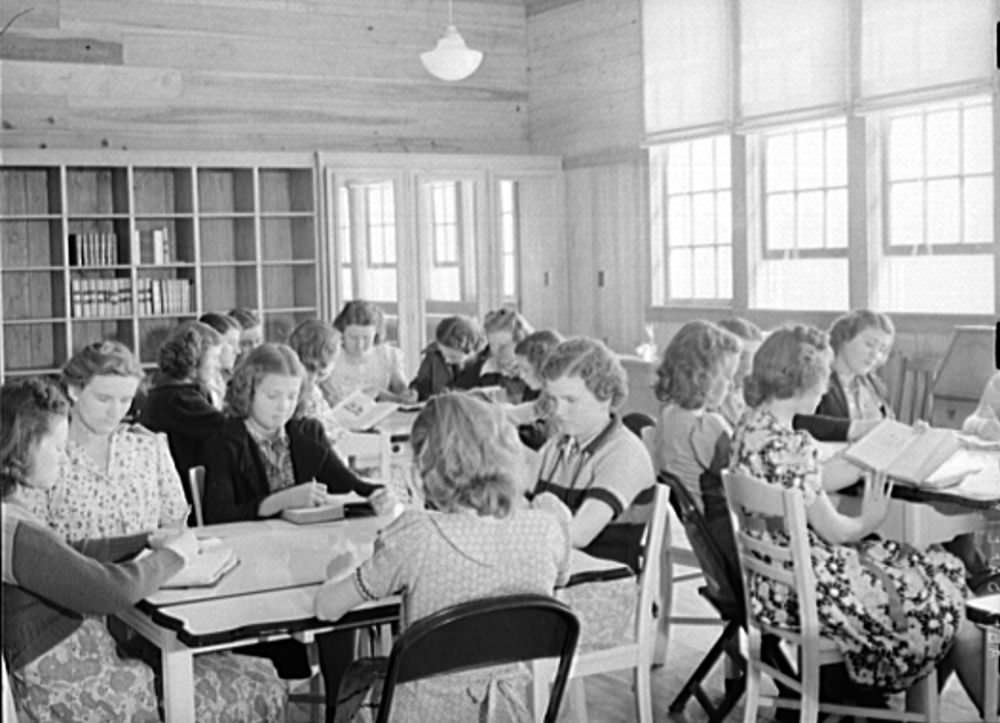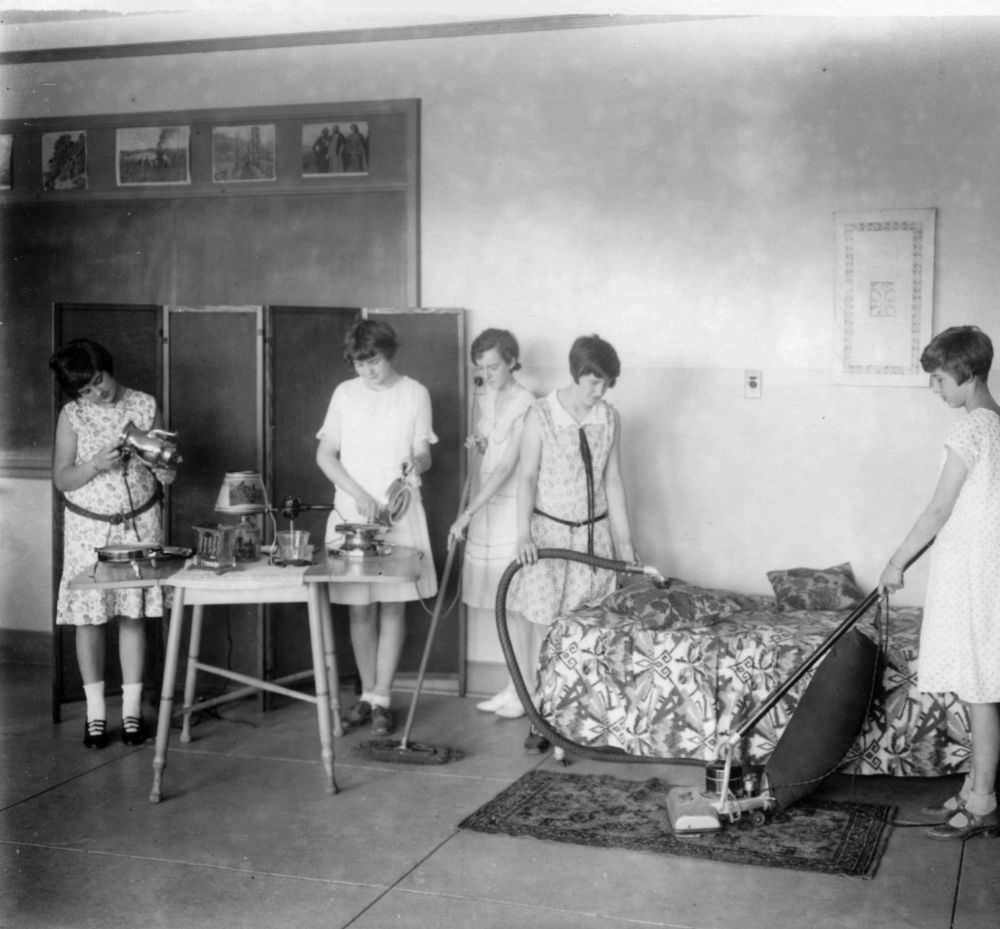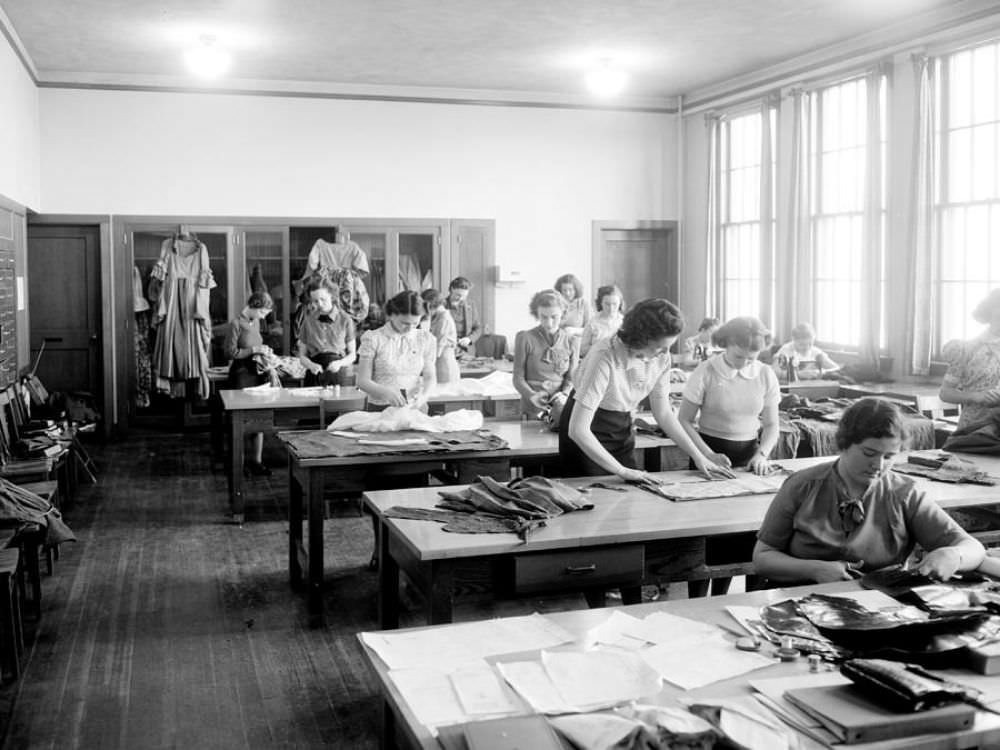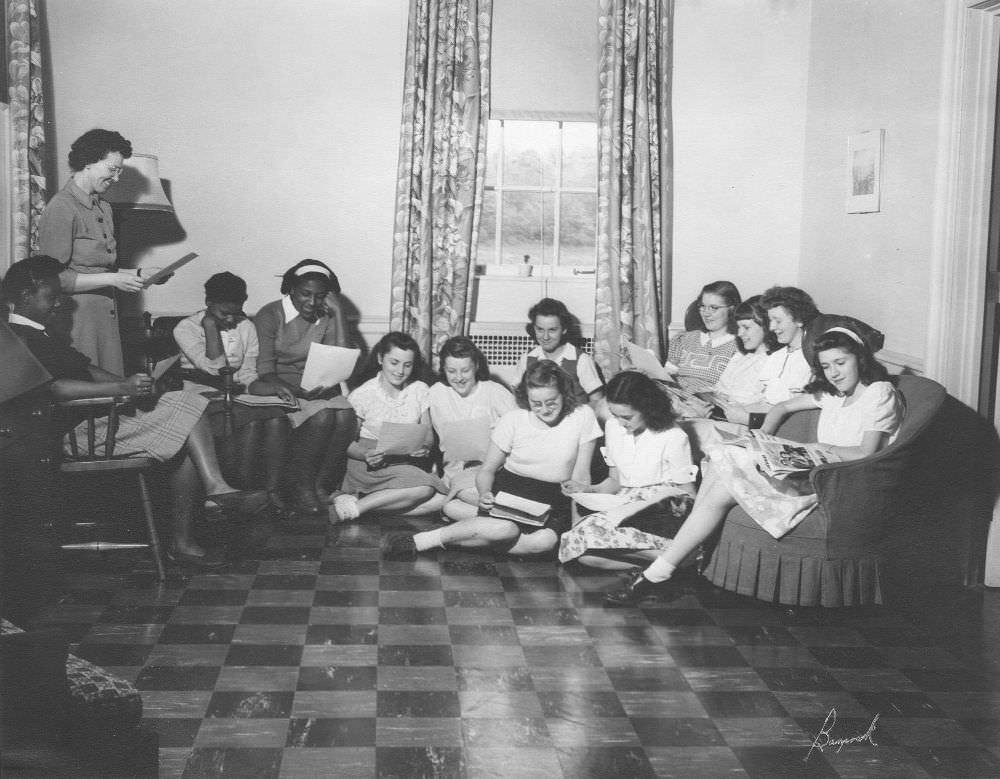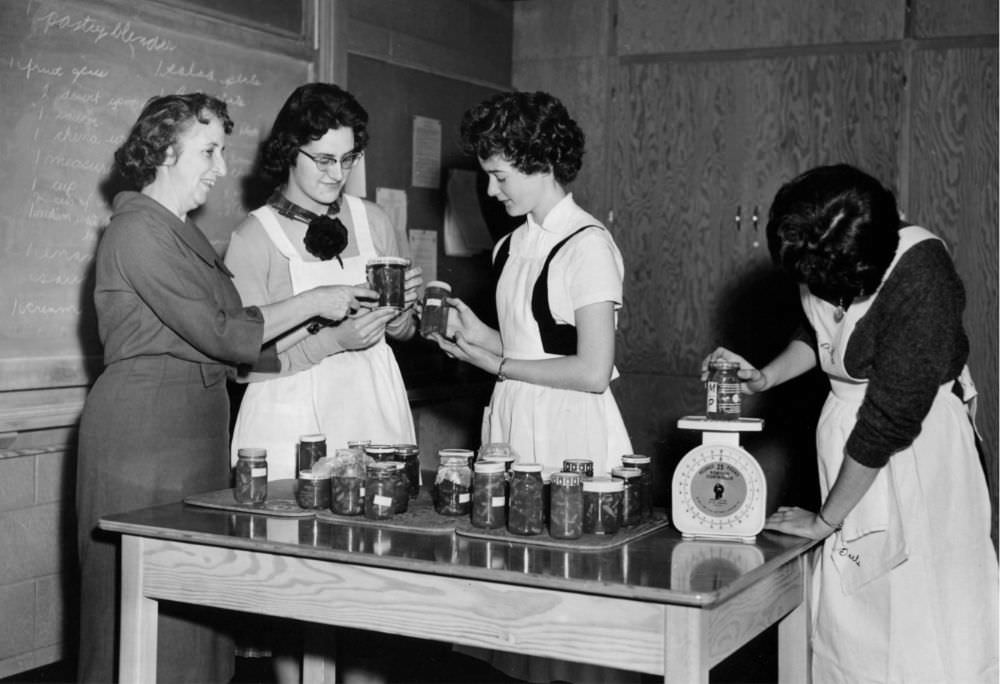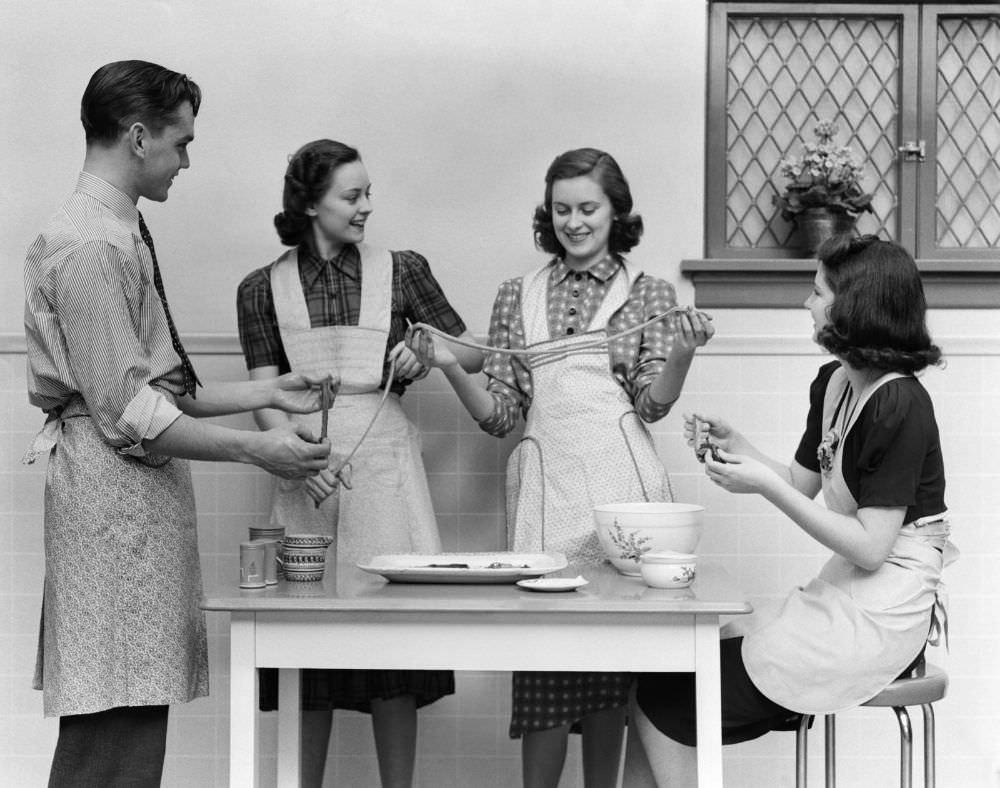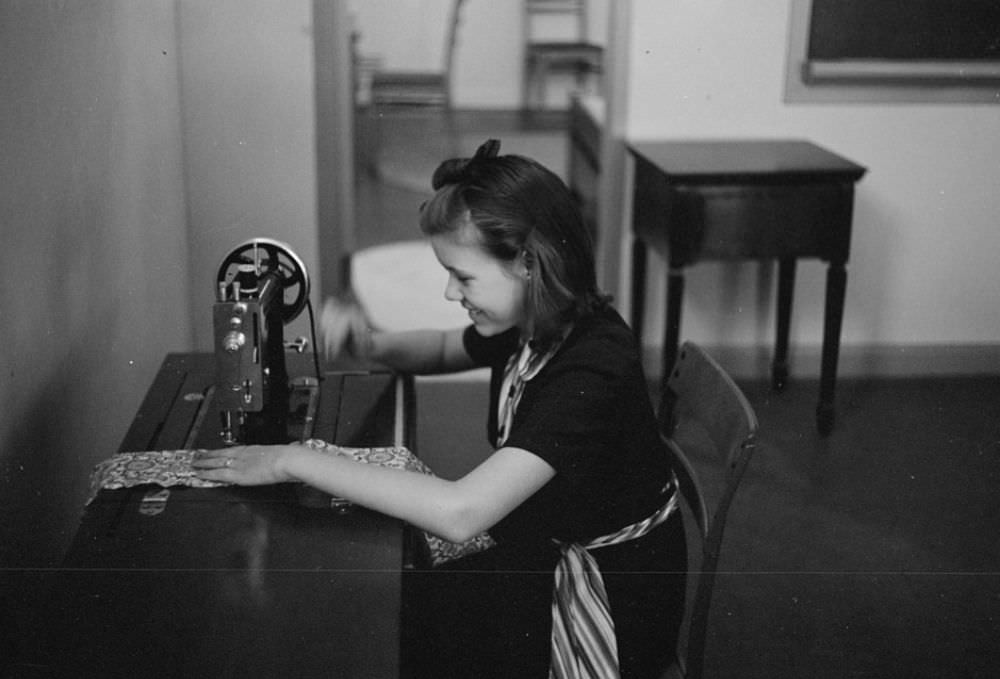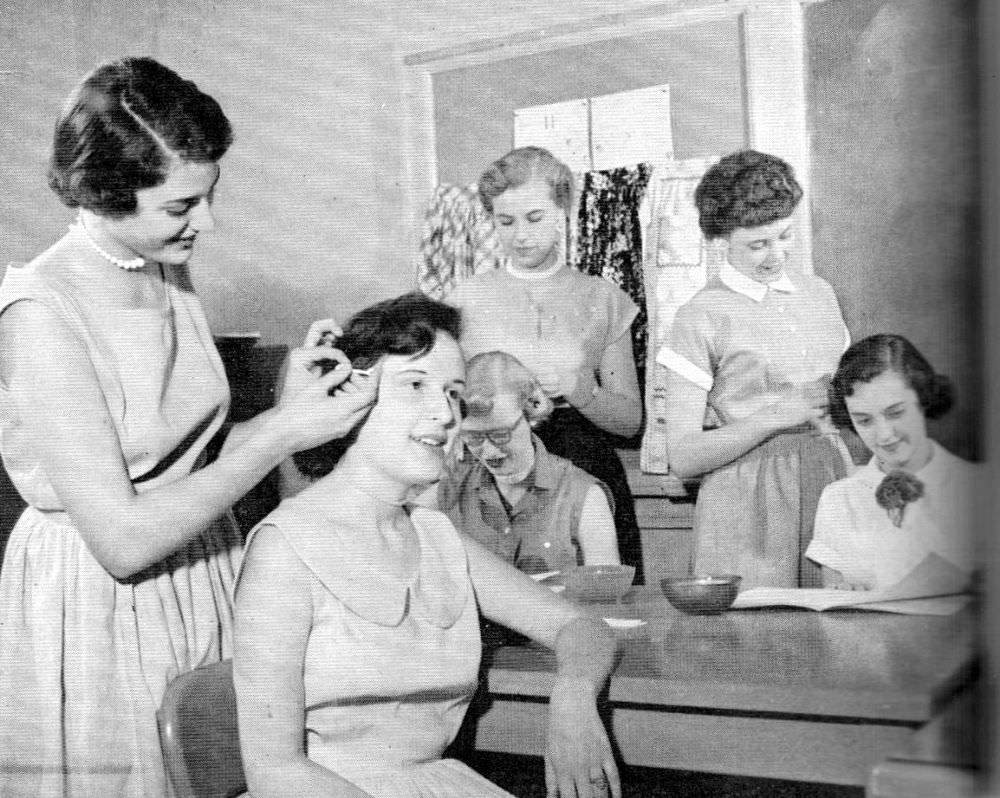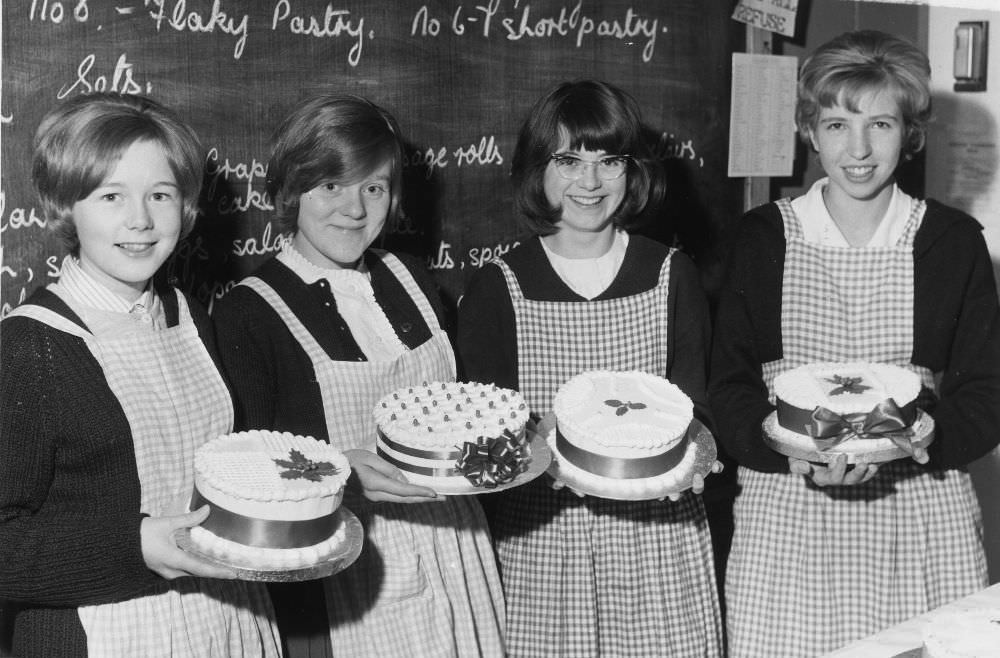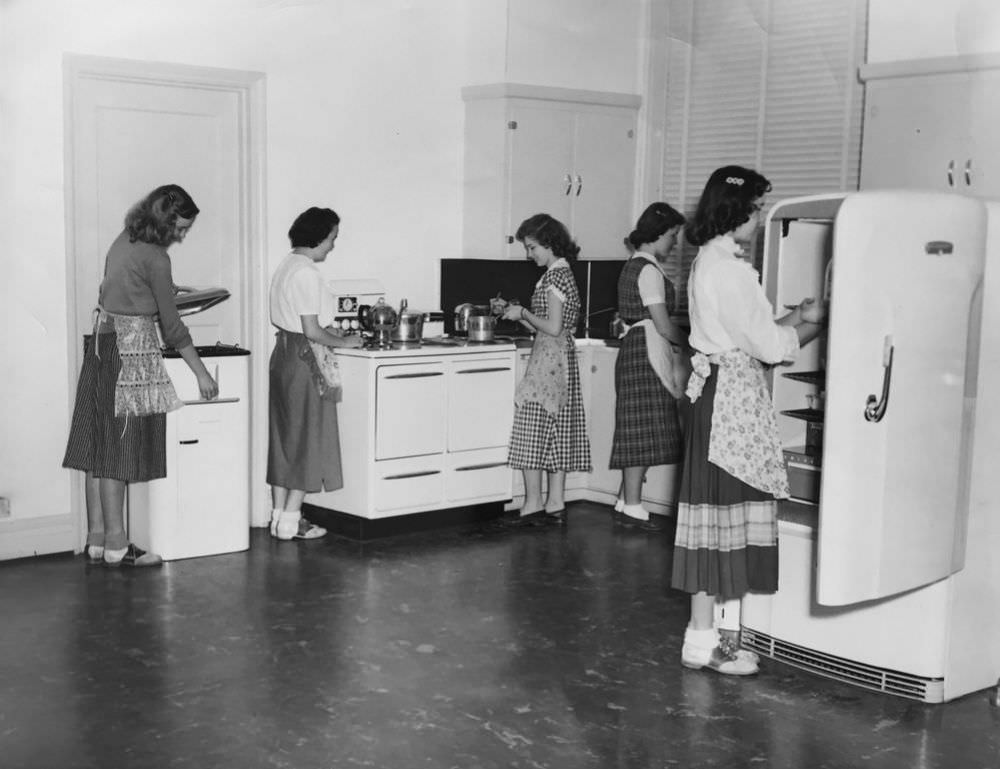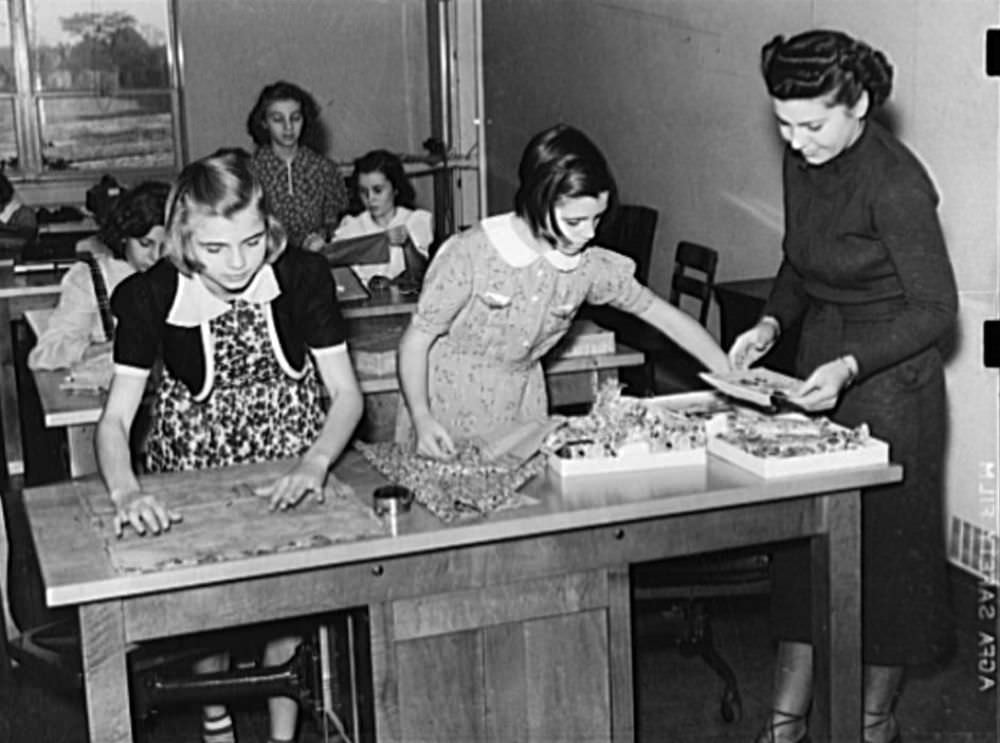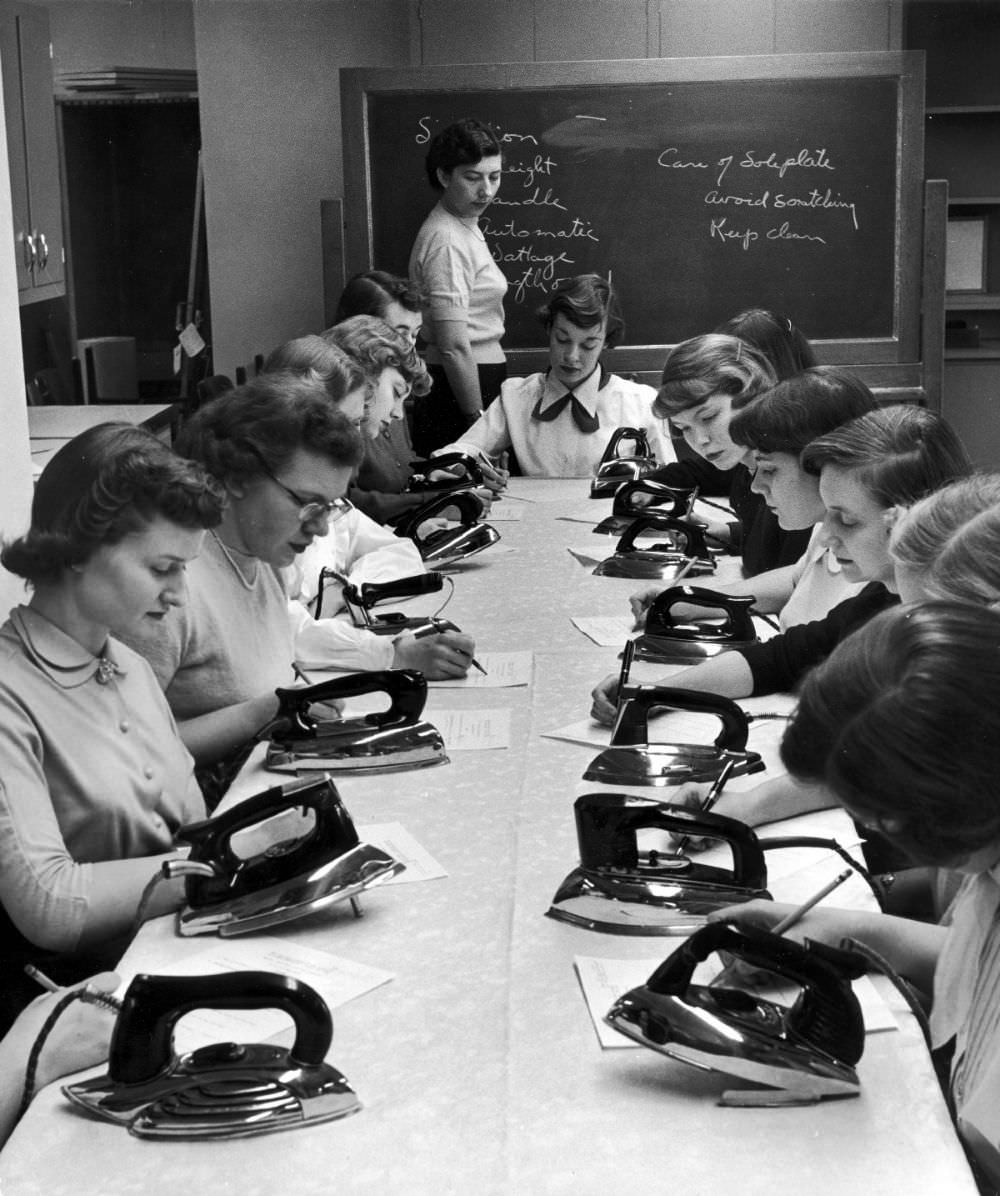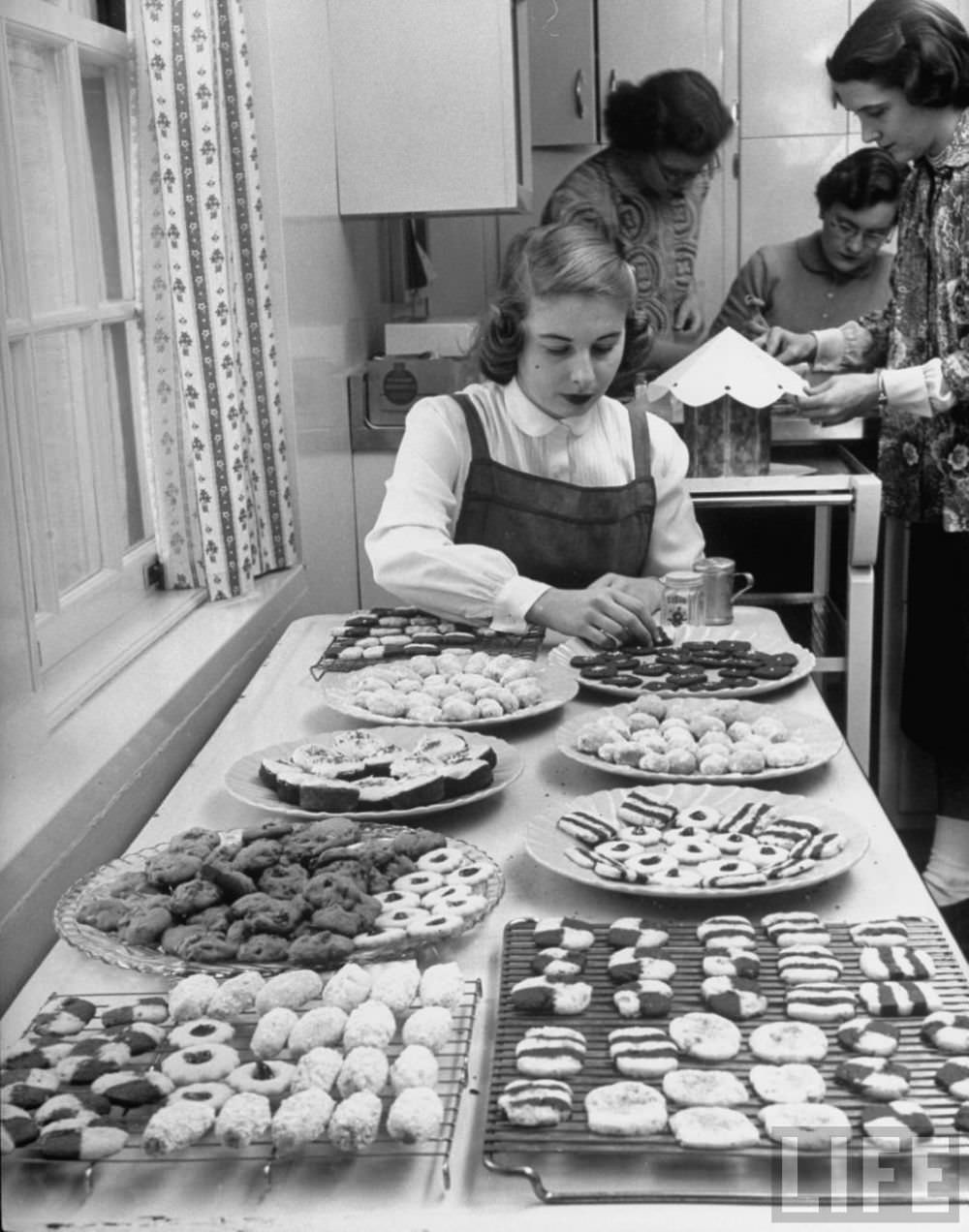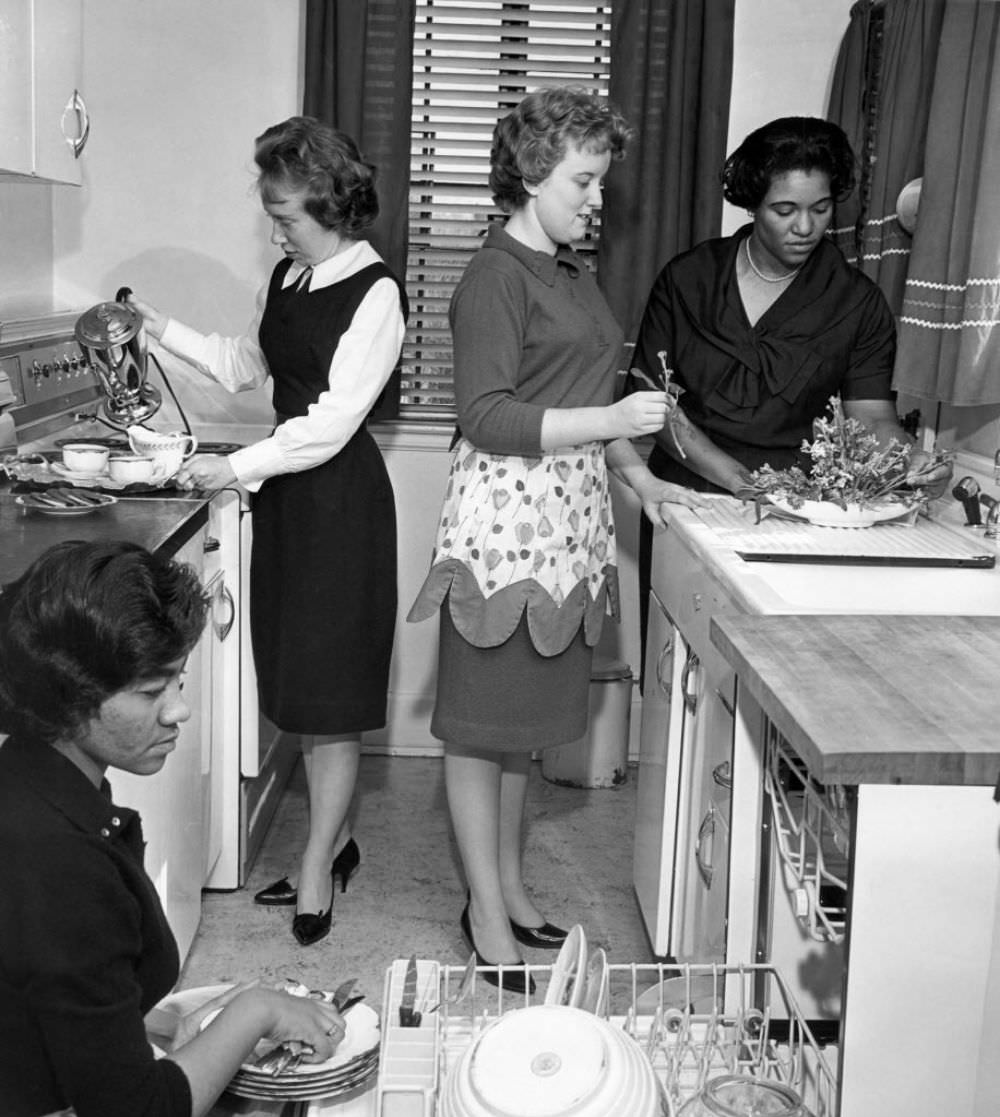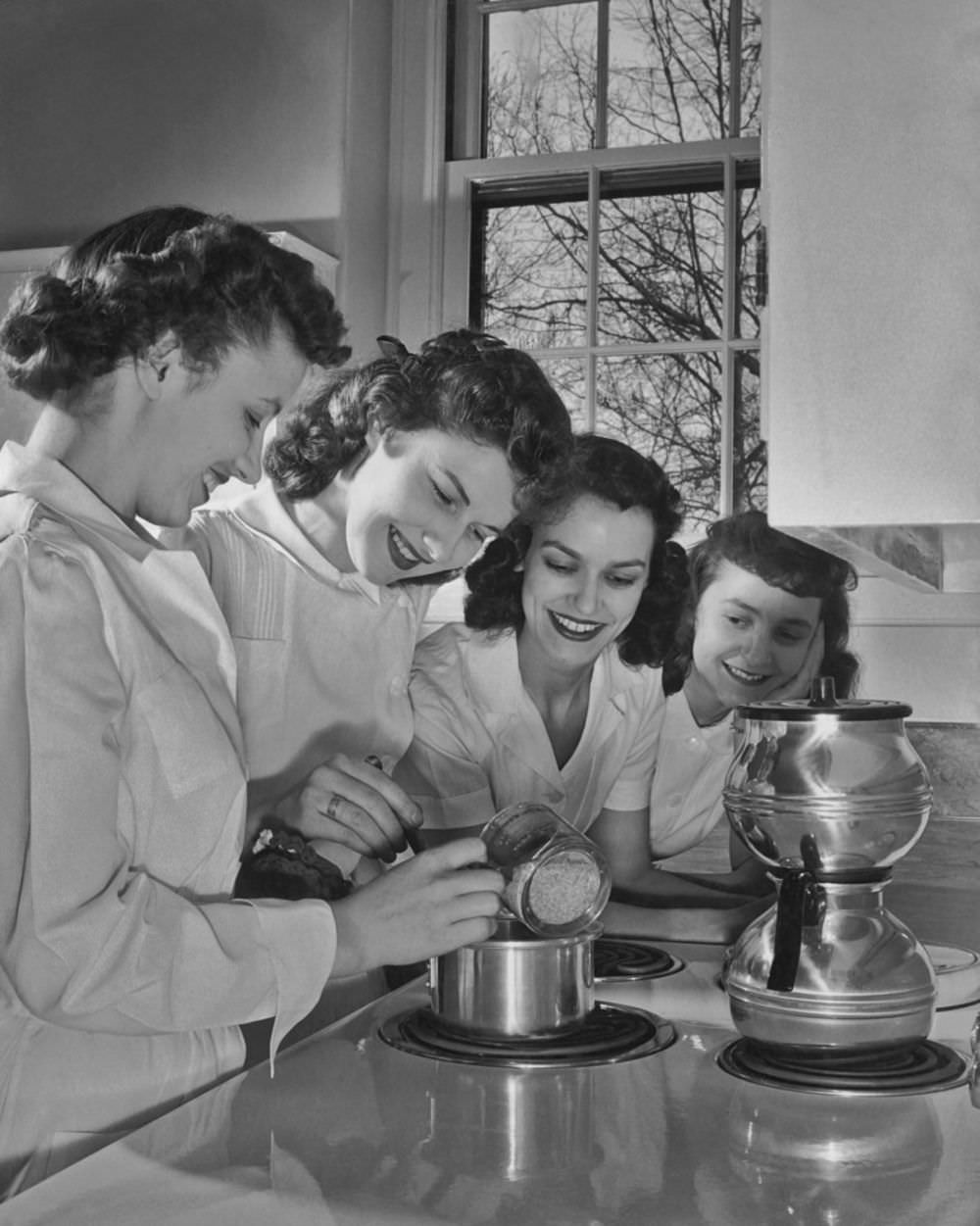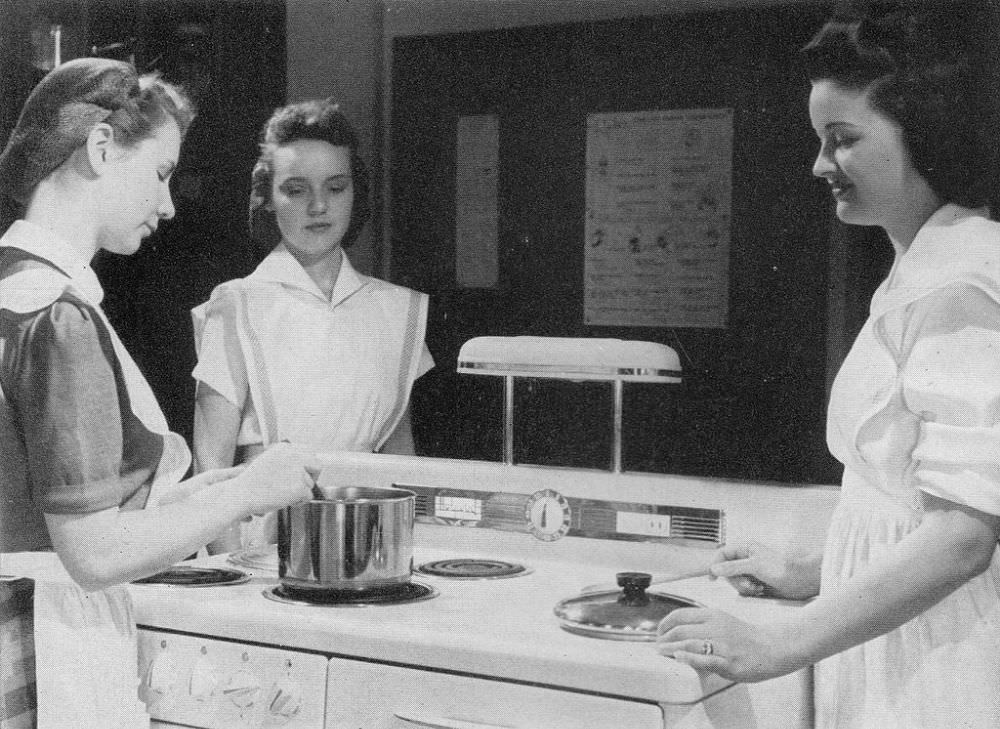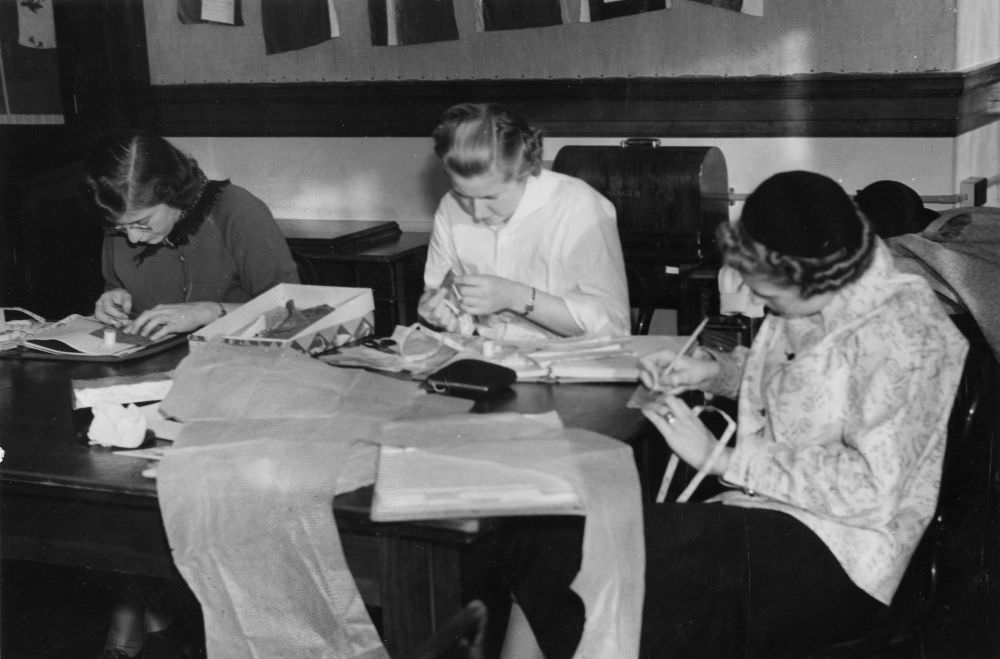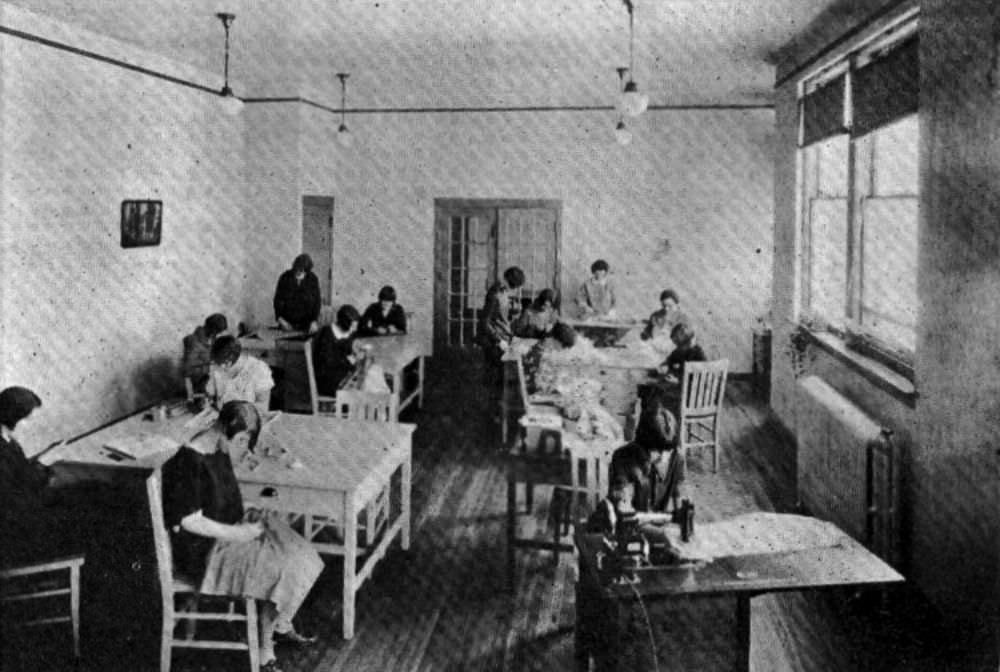Picture this: it’s the roaring ’20s. Jazz music fills the air, and flappers are redefining fashion. Amidst this cultural revolution, a quieter but no less significant movement is taking place in classrooms across America – the rise of home economics classes for girls.
The Dawn of Domestic Science
The 1920s and 1930s were decades of dramatic change, not just in music and fashion, but in the way society viewed the education of women. Home economics, initially known as domestic science, emerged as a cornerstone of girls’ education. But what exactly was home economics?
Think of it as a Swiss Army knife of domestic skills. Home economics classes didn’t just teach cooking and sewing. They were comprehensive courses covering nutrition, budgeting, child care, and even the basics of interior decorating. Essentially, these classes aimed to professionalize homemaking, transforming it from a set of skills passed down through generations into a formal, structured curriculum.
A Typical Day in Class
Step into a 1920s home economics class, and you might find girls huddled around Singer sewing machines, diligently stitching aprons or piecing together quilts. In another corner, there’s a buzz around the latest Frigidaire electric refrigerator, a luxury at the time. The teacher, often a woman with training in domestic science, guides the students through lessons in preserving food, managing a household budget, and even etiquette – the art of setting a table for a dinner party, for instance.
Cooking lessons were particularly fascinating. Imagine the excitement (and perhaps a few nervous giggles) as students learned to bake bread from scratch or prepare a chicken for roasting – skills many of them would use for the rest of their lives.
More Than Meets the Eye
But home economics was more than a simple transfer of skills. It was deeply embedded in the social fabric of the time. These classes were part of a broader movement to standardize and improve household management, and, by extension, to improve public health and family life. Nutrition was a significant focus. Lessons on balanced diets, vitamins, and the food groups aimed to combat dietary deficiencies common at the time.
Moreover, home economics was not just about conforming to societal expectations. For many girls, these classes were a springboard to further education and career opportunities. Graduates often became teachers, nurses, or dietitians – professions that were gaining recognition and respect.
The Classroom as a Social Hub
Beyond the skills and knowledge, home economics classes were social and communal spaces. They fostered a sense of camaraderie and shared purpose among girls. In an era before social media and instant messaging, these classes were where friendships were forged, experiences were shared, and, undoubtedly, a fair share of school gossip was exchanged.
As the 1930s ended, the world was on the brink of monumental change. But the lessons and experiences of those home economics classes would resonate with the students for decades to come. These classes were a unique blend of education, socialization, and preparation for adult life – a combination that made them a memorable and defining part of many young women’s lives.


